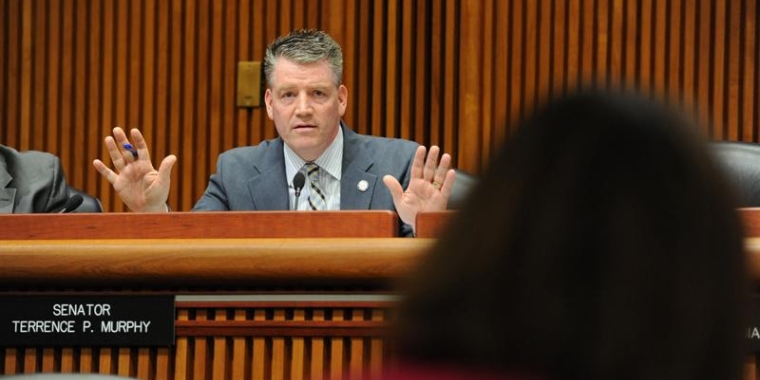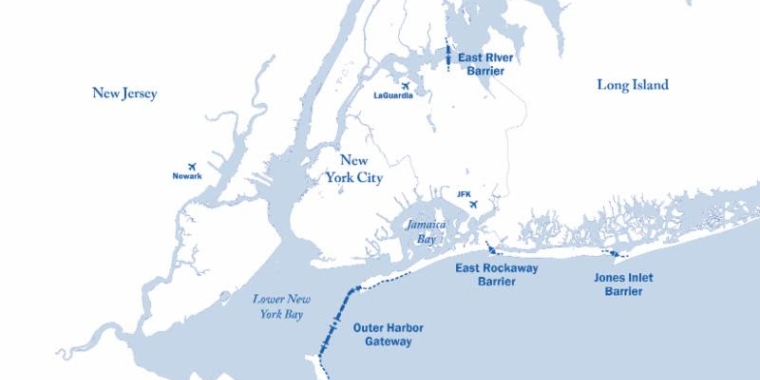
Murphy applauds Hudson Valley communities' for awards in NY Prize microgrid competition
Terrence P. Murphy
July 8, 2015

VALHALLA, NY - Six local municipalities from the Hudson Valley's 40th Senate District have been awarded approximately $100,000 each to support innovative microgrid projects. Announced earlier today, the Village of Sleepy Hollow, Town of Mt. Kisco, Village of Croton-on-Hudson, Town of Cortlandt, the Town of Somers and the Westchester County Valhalla Campus are Stage 1 Winners.
"The Hudson Valley continues to prove itself as an incubator for new technologies," State Senator Terrence Murphy said. "It is no secret that our state continues to face an energy crisis and I applaud these communities for taking a proactive step toward energy independence. As a town councilman I supported similar projects in Yorktown and will continue to advocate for the use of clean green energy that will reduce our carbon footprint and ease the pressure on our aging energy infrastructure."
Overall, there were 83 communities which qualified for the competition's Stage 1 awards with more than 130 proposals submitted statewide. Now, the awarded communities will study the feasibility of installing a community microgrid which is a standalone energy system that can operate independently of the main grid in the event of a power outage. Such systems would integrate renewable power with other advanced energy technologies to create a cleaner, more affordable and more resilient localized energy grid for a limited number of users.
Westchester County Legislator Michael Smith said, "This microgrid grant is a great first step to exploring self-sustaining energy resources and technology in our community. The Westchester County Valhalla Campus, which includes the Westchester County Community College, makes an excellent partner in this endeavor. I thank Senator Terrence Murphy for his help in securing the grant. His forward-thinking leadership is to be commended."
Somers Supervisor Rick Morrissey said, "The Town of Somers is fortunate to receive this award sponsored by NYSERDA and we are looking forward to working with our partners and community groups to make this a success. After Hurricane Sandy it became clear that we needed to upgrade our energy infrastructure and this grant is the first step toward making that objective a reality."
Sleepy Hollow Mayor Ken Wray said, "We must ensure that the reliable energy needed to safeguard the lives and well-being of our residents is there when we need it. This grant will provide us with the critical planning tool we need to accomplish this."
New York State Chairman of Energy and Finance Richard Kaufman said, "The NY Prize competition brings together local leadership and private sector innovation to develop clean, resilient and affordable power solutions for communities from the South Fork on Long Island to Buffalo and the North Country."
Cortlandt Supervisor Linda Puglisi said, "The Town of Cortlandt along with our Town Board and Committee is very pleased to have been selected by NYSERDA to work on a microgrid feasibility study. The results of this study will eventually assist with a better grid system and lower costs for our residents. We held a kick-off meeting today at Town Hall with our various partners and some of our stakeholders, as well as, representatives of NYSERDA and Sustainable Westchester."
The summaries of each project are as follows:
Town of Cortlandt: Hurricanes Sandy and Irene and Tropical Storm Lee caused costly damages to Cortlandt, including loss of power to critical services, local businesses, and residents - some for a period of 10 days. The proposed microgrid would include biomass, natural gas, and diesel, and would provide power to the town hall, hospital, fi re department, water filtration plant, waste-to-energy plant, gas stations, grocery stores, assisted living centers, and a school. Partners: Town of Cortlandt, Con Edison, Booz Allen Hamilton, Power Analytics, Siemens USA, Pace Energy and Climate Center, and Sustainable Westchester.
Westchester County's Valhalla Campus: The Westchester Community College and Westchester County Valhalla Campus are centrally located in one of New York's most populous counties. The county, with two shorelines - one on the Hudson River and the other on the Long Island Sound - is especially susceptible to floods and power outages during an extreme weather event such as Hurricane Sandy. The County's First Responder capabilities, in time of crisis, are also critical to New York City because of their strategic geographic location. The proposed microgrid would explore a mix of distributed energy resources such as solar and combined heat and power applications, along with battery storage. Partners: Con Edison, Entecco, Eaton, Kheops, KeyBank, TAG Mechanical, and New York Power Authority.
Town of Somers: This community has experienced severe storms in recent years, with power outages from Hurricanes Irene and Sandy and Tropical Storm Lee lasting up to 11 days. Partial day outages are experienced throughout the year from downed power poles and line failures. The proposed microgrid would include solar and diesel. Power would be provided to a sewage plant, activity center (designated town emergency shelter), town office, gas stations, nursing home, library, schools, fi re station, state trooper station, and commercial complexes. Partners: Town of Somers, NYSEG, Sustainable Westchester, Pace Energy and Climate Center, Booz Allen Hamilton, Power Analytics, and Siemens USA.
Village of Croton-on-Hudson: Croton's location downstate and directly on the banks of both the Hudson and Croton Rivers makes it particularly vulnerable to storm damage. Hurricane Sandy left much of Croton without power for nearly two weeks. Croton will follow the model of a "nested microgrid" in which there will be two main geographical areas in the system, each fed by their own portfolio of distributed generation (combined heat and power, solar, and energy storage), and each capable of staying powered in island mode during a grid outage. However, when the grid is powered, the two areas will be connected, and can be managed as a single microgrid system with generation resources optimized to meet loads across the entire system. The proposed microgrid would provide power to a municipal building, library, three fi re stations, three schools and district office, medical clinic, grocery/pharmacy, and gas station. Partners: Village of Croton-on Hudson, Sustainable Westchester, Pace Energy and Climate Center, Green Energy Corp., Hitachi Consulting, GI Energy, and Con Edison.
Village of Sleepy Hollow: The village, which lacks resiliency in the event of severe weather or other emergency, has proposed a microgrid using a combination of combined heat and power, wind, solar, tidal power, and other smart technologies. Power from the proposed microgrid would be provided to village hall, police station, fi re houses, water and sewer fi ltration/pump stations, PK-12 schools, and affordable housing. Partners: Village of Sleepy Hollow, Village of Briarcliff Manor, North Tarrytown Housing Authority, Public Schools of the Tarrytowns, New York Power Authority, Con Edison, Brookhaven National Laboratory, and Willdan Energy Solutions.
Village of Mt. Kisco: This community has suffered numerous power outages from Hurricanes Floyd, Irene, and Sandy, plus heat waves, nor'easters, and snowstorms. The proposed microgrid would use a mix of power generation sources including solar, natural gas, and diesel, and would provide power to the village office, library, police station, fi re departments, volunteer ambulance corps, medical facilities, pumping stations, service stations, schools, local industries and businesses, and shelters. Partners: Village of Mount Kisco, Booz Allen Hamilton, Sustainable Westchester, Pace Energy and Climate Center, Power Analytics, Siemens USA, and Con Edison.



